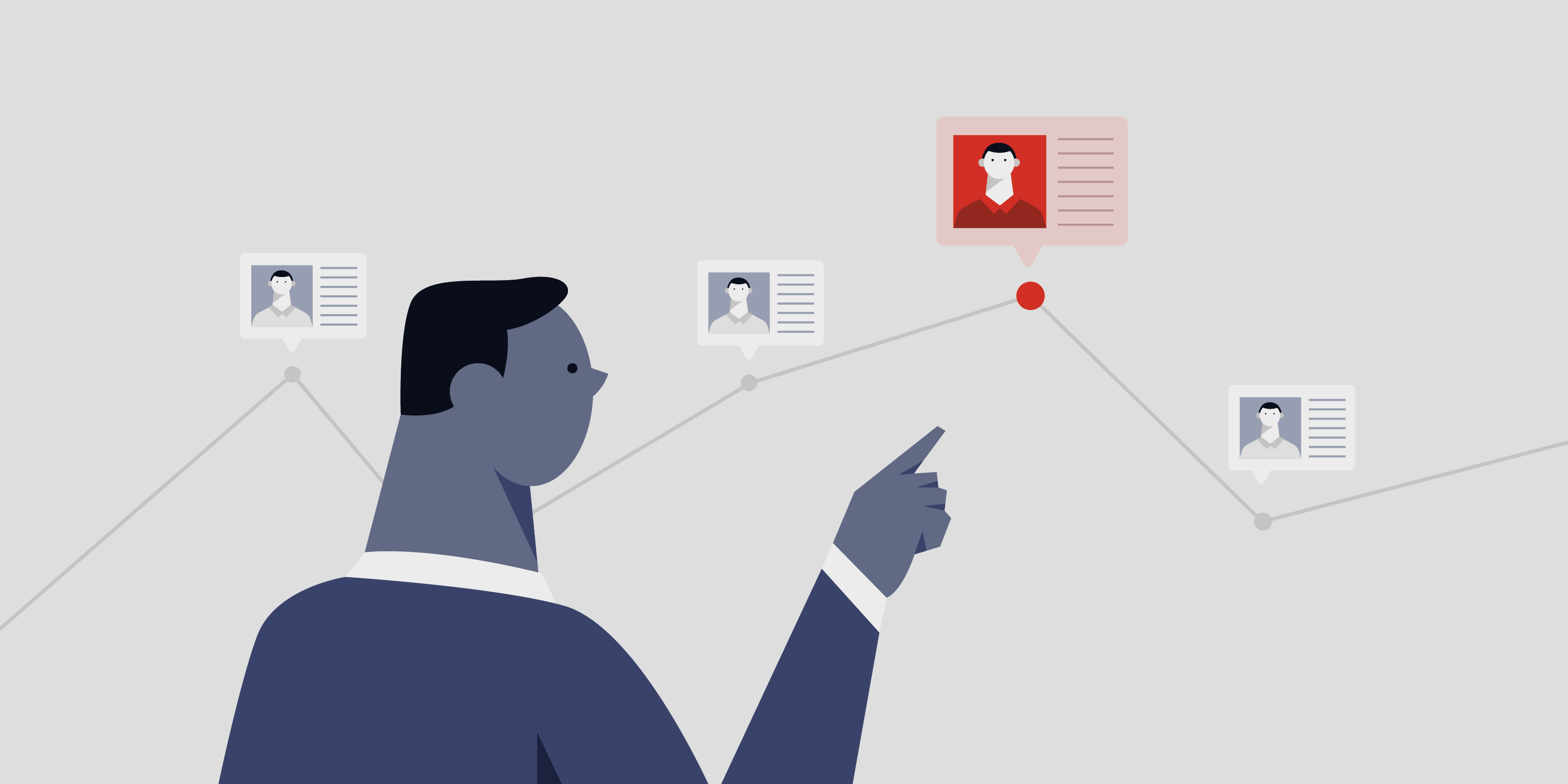How to Use the STAR Method for Behavioral Interviews

Sphoorti Bhandare has 10 years of experience writing about HR and technology.
STAR method — an acronym for Situation, Task, Action, and Result — acts as a structure to ask and answer behavioral interview questions.
An interview is the most crucial step in your hiring strategy.
Resumes and references are important, no doubt. But applicants use them as tools to sell their strengths — with 62% of candidates exaggerating skillsets — making them inadequate.
On the other hand, an in-person interview allows you to evaluate candidates based on:
- Critical-thinking
- Decision-making
- Interpersonal skills
- Goals and passion
- Successes and failures
- Cultural compatibility
Yet, recruiters make bad hires all the time. According to Leadership IQ’s three-year study, almost half of the 20,000 new hires failed at their job within the first 18 months.
Mis-hires cost your company a fortune, around one-third to five times the hiree’s salary. Plus:
- They increase employee turnover
- They lead to HR overspend
- They promote wastefulness in rehiring
- They damage employee morale and team performance
If you do not make a thorough evaluation or worse, go with your gut feeling during the interview, chances are you will hire a mediocre or wrong individual.
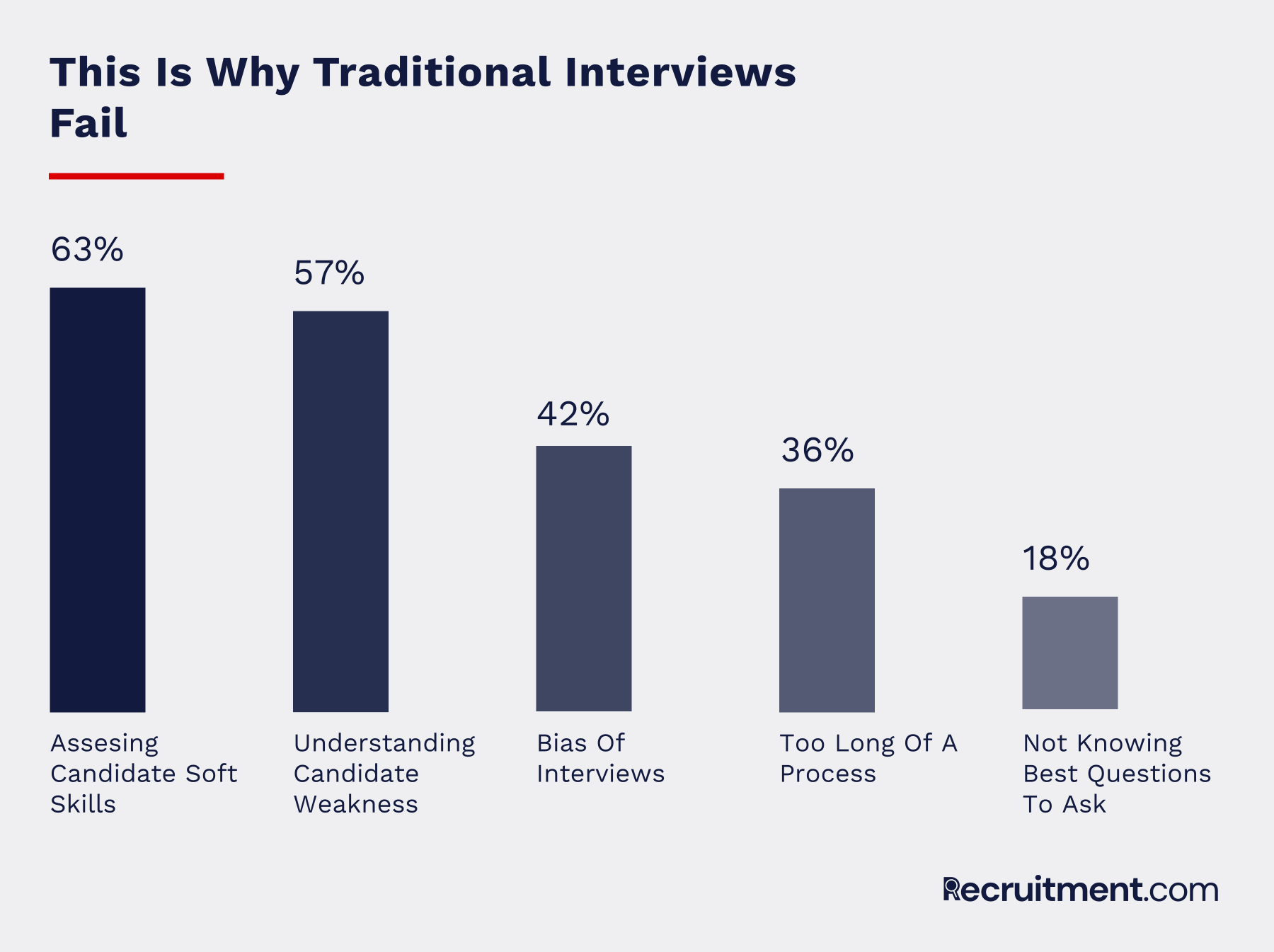
Some behavioral questions are:
- Can you give an example of how you convinced your supervisor to execute your idea or concept? What was the result?
- Give me an example of when you helped a coworker in their project.
- Give a specific example of when you had to learn something quickly without knowing anything about it.
- Describe a scenario wherein you used data to achieve your goals.
- Can you tell me how you resolved a disagreement with your boss?
Candidates may prepare fake or canned responses to common interview questions.
But when it comes to answering behavioral questions using the STAR method, a candidate has to think, explore, and process her experience.
She has to use situation, task, action, and result to communicate a linear story that is verifiable and provides enough evidence of her credibility as a company asset.
Besides, through her anecdotes, you can analyze the work ethics, skillset, problem-solving, and learning ability she used to complete a specific task or responsibility.
Past performance is a great predictor of future performance, especially in a comparable situation. And the STAR interview method provides the perfect checklist for this type of evaluation rubric.
You can even use this method to develop a data-driven system for future hires.
Of course, the STAR method is ineffective unless you know the work culture and the exact employee skillset and competencies you are looking for.
For example, if you are hiring a marketing executive, your behavioral question can be to describe how a candidate aligned their department goals with the sales team.
Without this knowledge, you will not know what to expect in a candidate’s answer or whether it is the right answer. This may create a poor hiring experience.
Remember: An interview is a two-way process. Candidates will evaluate you too.
And now, here is a detailed, step-by-step explanation of the STAR method.
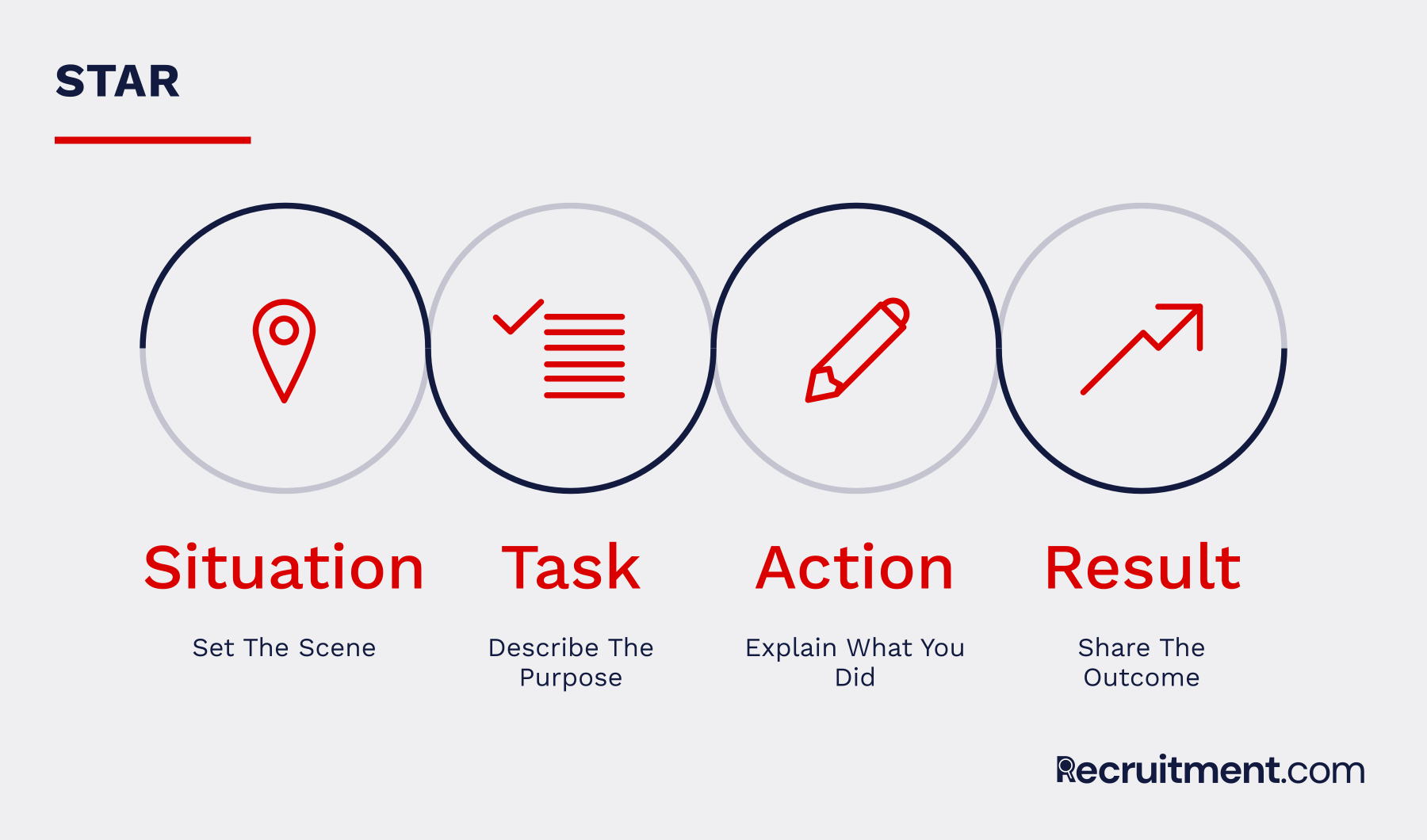
Situation (S)
Herein, the candidate sets the context of the task or issue they faced. It can be from their past job, a college group project, or even a volunteering program.
As long as it is relevant to the job position, a candidate can share any past Situation to assert their value.
For example, a candidate may recall the following Situation.
In my previous role as a marketing manager, I was leading a small team to complete the marketing campaigns. The CEO and Head of Sales were giving us a lot of work with unrealistic deadlines and goals. This was, ultimately, leading to a backlog of work which was damaging my team’s morale and performance.
Task (T)
This part outlines the candidate's responsibility to resolve the Situation.
Maybe they were trying to achieve a performance goal, complete a project deadline, handle unsatisfied customers, or migrate company teams to new software.
The candidate may continue to say:
As the manager, I took the responsibility to be transparent with both the CEO and Head of Sales and communicate my team’s bandwidth to accept and complete given tasks regularly.
The Task lets you understand the candidate’s scope of work, the result they expected, and the issues they may have faced.
Action (A)
This STAR section explains how the candidate completed a task or resolved a problem.
Candidates can give a step-by-step account of their thought-process, alternate strategies, time spent to resolve the Situation, who was involved, etc.
The candidate may describe her Actions as:
I set up a communication channel on Slack for the Sales and Marketing team. Through the channel, both departments freely discussed each other’s projects, priorities, goals to align their timelines and promote a consistent brand image. I also scheduled a weekly stand-in meeting to get both the CEO and Head of Sales to join the conversation on project expectations, bandwidth, and updates.
Result (R)
Finally, the candidate recounts the outcome they accomplished. You get to see if the candidate resolved the issue and reached the expected result.
Besides, you find out what actually happened and how things got better after accomplishing the tangible outcome, for the company and the candidate.
The candidate may end her STAR answer with this:
By creating and sustaining an active conversation between Marketing, Sales, and the CEO, we were able to narrow down and re-prioritize our list of marketing tasks. Plus, we revised expectations and deadlines for marketing goals, allowing my team to complete the backlog of work in just one quarter and focus on building efficient processes to achieve marketing goals.
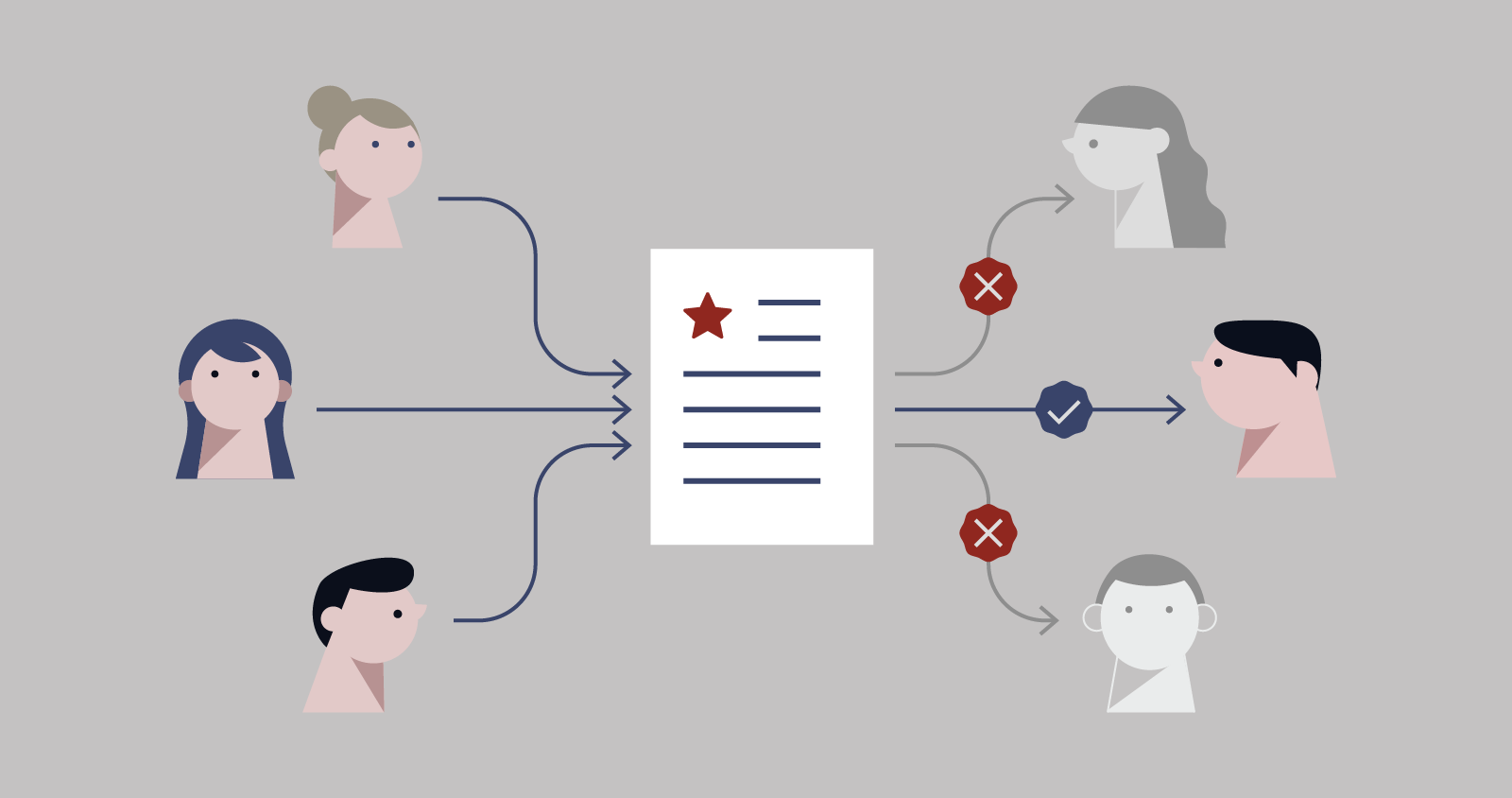
Are there certain roles these questions work better for?
Although STAR interview questions help you identify and onboard ideal candidates for any position, from entry-level to C-Suite, certain roles may benefit more.
Given that behavioral questions, in general, fall under the following categories:
- Pressure/stress
- Conflict/communication
- Teamwork
- Leadership/ownership
- Problem-solving
You can use the STAR interview method to hire great candidates for jobs and tasks that match one or more of the categories mentioned above. For example, hiring candidates for engineering, product/DevOps, customer care, sales, and marketing departments using the STAR method can prove profitable, in terms of the time and resources you spend.
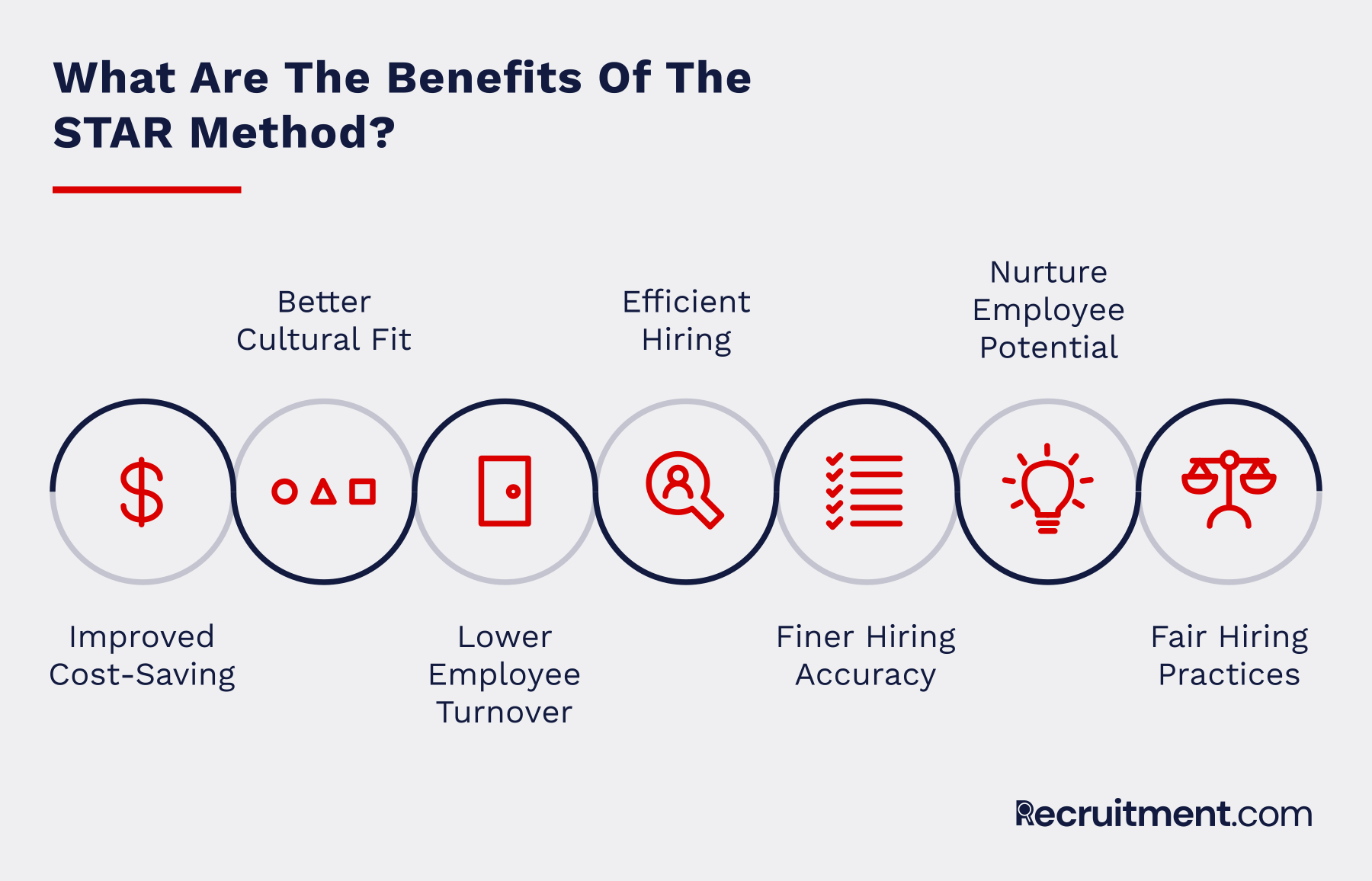
What Are The Benefits Of The STAR Method?
Improved cost-saving: When you use the STAR questions to interview candidates, the emphasis on their past actions and behaviors leads to choosing individuals who will succeed at their job, resulting in lower employee retention costs.
Better cultural fit: Using the interview answers, you can determine if the candidate possesses qualities that thrive in your corporate culture and team dynamic, like leadership, proactivity, and accountability.
Lower employee turnover: The STAR interview questions can help bring forward the most deserving candidates — irrespective of their previous job title or years of experience — reducing rates of mis-hires and employee turnover.
Efficient hiring: As you focus on fulfilling specific job competencies through the STAR methodology, your tendency to get distracted by irrelevant skills or work experience of other candidates will be minimal.
Finer hiring accuracy: Since you ask behavioral questions based on the skills you seek, you can select and hire individuals who have given validated examples using similar expertise in the past.
Nurture employee potential: The STAR questions allow you to analyze candidate behavior and highlight their innermost personality. This information, in turn, can assist your colleagues to assign the right tasks and responsibilities to new hires and promote their professional growth.
Fair hiring practices: You also develop a hiring system that treats and evaluates all applicants the same against a fixed skill set by asking the same STAR questions.
Conclusion: Take It Further
When it comes to using the STAR interview method, there are no right or wrong answers. What you do with these answers is far more valuable.
- How can you help candidates demonstrate their traits and competencies?
- What other ways can generate authentic conversations during interviews?

Sphoorti Bhandare has 10 years of experience writing about HR and technology.

